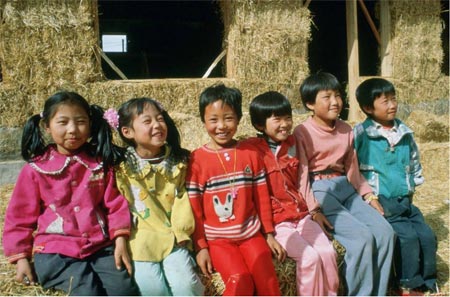
RETHINKING DEVELOPMENT
Local Pathways to Global Wellbeing
St. Francis Xavier University, Antigonish, Nova Scotia, Canada
June 20 to June 24, 2005
Natural Building
Presenters:
Linda Zhu, China
Nawab Ali Khan, Pakistan
Kim Thompson, Canada
Rapporteur: Diederik Prakke

Mainstream Practice
- Brick construction requires energy
- Substandard houses do not protect the inhabitants against cold: Requiring more fuel (of which price has doubled)
- Bricks are unsafe with earthquake
- Compressed Straw Bale House has a coal (energy) consumption: 60% less
- Also cost efficient, less earthquake prone
- Straw is considered backward technology: Hard to convince people with many doubts
- Brick is a symbol of wealth and success: Cultural prevalence hard to change
- Low general environmental awareness specially among rural farmers (they consider environmental preservation as government propaganda)
Overcoming economy
- Provide subsidy and demonstration school
- From third project onwards government and residents co-finance (25% farmer contribution). The subsidy convinces the farmers more than the technology
- Later dramatic subsidy reduction, as trust was build
Additional innovations:
- No blue glass window facing the South
- Also make middleclass straw houses, so not to stigmatise straw again as low class technology
Remaining challenges:
- Lack of industrialised system to supply straw bales (too small demand)
- Baling machine is expensive and labour intensive: Individual farmer can't own the machine
- No building code: To get drawings approved they check it against brick standard
- Brick is not yet banned and still available rurally
- Construction season not convenient
Large population is problem and opportunity, China is still more sustainable in ecological footprint, choosing for energy efficiency
See also: Straw Bale Ecological Housing Program in China (104K PDF)
Objective: Reduce diarrhoea death by 50%
Mainstream Practice:
Government is top-down centralised imposing solutions on communities, without participation, undermining sustainability. 80% of schemes failed due to poor O&M. Realised a need for integrated approach, including health and hygiene awareness
Alternative Vision:
6-components together:
- Community management, bottom-up. Establish or strengthen including O&M fundraising beforehand
- Health and hygiene education, women (community programme with CHIP) and children (schools)
- Potable water to door step
- Different in-house designs depending on cultural needs
- Drainage of waste water
- Water quality management (source, storage, household testing)
Key Challenges:
- Funding agencies have their own agenda (while Aga Khan wants integrated holistic approach)
- Need for cross-disciplinary staff
- Unstable political and law- and order situation
Innovative Practice or Strategy:
- Use renewable
- Low-tech
- Therefore community building: Involving youth and others
- New range of technology with local resources and low negative impact on the environment. Heating of building is a huge chunk of energy consumption
- Straw Bale does not need any wooden frames (for strength; just some light frames are put up for the shaping and filling in): Just Straw Bales, can be large and at least two-stories high.
- All shapes are possible, and all foundations and roofings: Straight, round, etc.
- Plaster was first cement mortar, but now more and more natural plasters
- Over twelve years also experience with O&M e.g. with leakage repair, taking out a bale and refixing
- You can use chainsaws to shape the Bales
- 'Bales' can be anything, such as beer boxes, earth bags...
- Options, fun and deep satisfaction to make art on the walls: Putting in colourful stones, clay paints, before coating to make it water tight
- Thatch (roofing)
Looking at how birds build their nests, we can get so many creative ideas that we can experiment with and implement ourselves.
See also: Rethinking Building - Naturally - with Youth
Different motivations: People in Mongolia want cheap and warm houses, and have slight cultural preferences (but that's not the main thing). So connect to that motivation first; bring in spirituality and ecology later in this case of Mongolia and China.
Benefit to the dweller (in terms of wholesomeness) is as large as the positive impact on the environment.
Overview :: Presenters :: Proceedings :: Papers :: Home
Sealevel